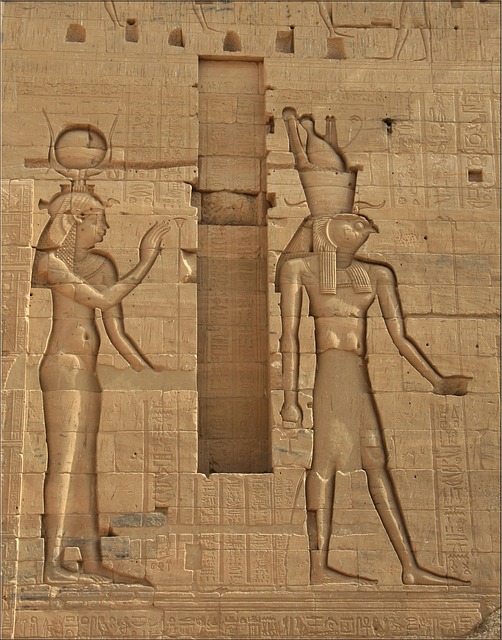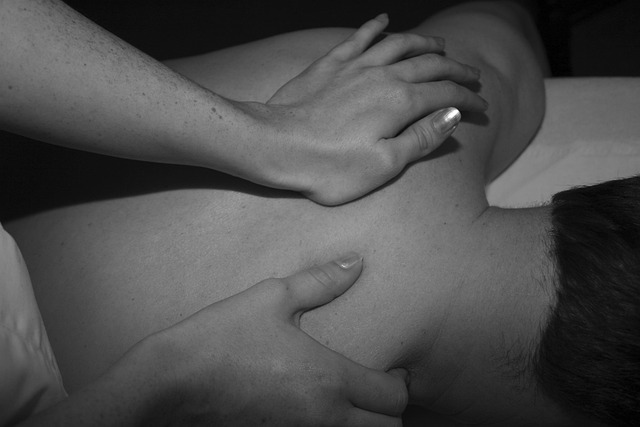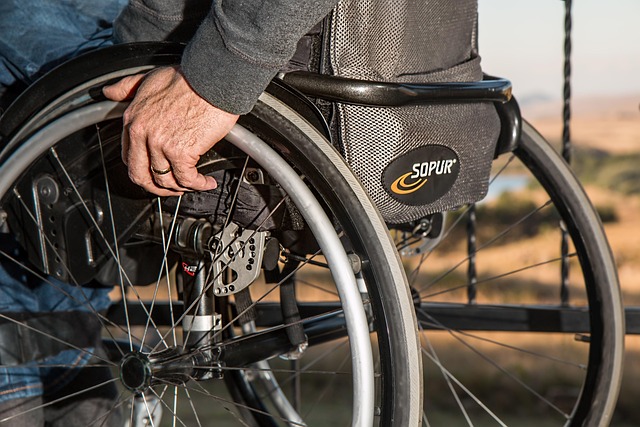Stress Relief Therapy through Yoga and Meditation:
Modern life often comes with chronic stress that negatively impacts mental and physical health. Yoga and meditation, ancient practices from India, offer effective stress relief therapy. Yoga combines asanas (physical postures), pranayama (breathing techniques), and meditation to calm minds, heal bodies, and regulate the nervous system, thereby reducing cortisol levels. Meditation, a key component of yoga, teaches mindfulness and inward focus, leading to mental clarity and tranquility.
These practices cater to all fitness levels, with styles like gentle Hatha for beginners and dynamic Vinyasa for more advanced practitioners. Regular sessions (15-30 minutes daily) enhance resilience to life's challenges, promote mental focus, and foster emotional stability. Personal stories of individuals like Sarah and Mike highlight their success in managing stress through yoga and meditation, underscoring the accessibility and profound benefits of these ancient techniques as modern stress relief therapy.
Stress is a modern-day epidemic, but ancient practices like yoga and meditation offer powerful solutions. This comprehensive guide explores how these mind-body therapies can revolutionize your stress relief journey. From understanding the impact of stress on well-being to delving into the historical roots of yoga and the science behind its benefits, we cover everything you need to know. Discover various yoga styles, meditation techniques, and real-life success stories, empowering you to incorporate these practices for optimal relaxation and enhanced mental health.
Understanding Stress and Its Impact on Well-being

Stress is an inevitable part of modern life, but it needn’t overwhelm us. It’s important to understand that chronic stress can have a significant impact on our overall well-being, affecting both mental and physical health. When we experience stress, our bodies release hormones like cortisol, which can lead to increased heart rate, elevated blood pressure, and heightened anxiety levels over time. This can contribute to conditions such as heart disease, depression, and insomnia.
Yoga and meditation have emerged as powerful tools in the quest for effective stress relief therapy. These ancient practices offer a holistic approach by not only calming the mind but also nurturing the body’s natural ability to heal and rejuvenate. Through specific breathing techniques, posture holds, and mindfulness exercises, yoga and meditation can help regulate our nervous system, reduce cortisol levels, and promote a sense of inner peace and balance.
Yoga: A Historical Practice for Mind-Body Connection

Yoga, an ancient practice with roots in India, has been a mind-body connection tool for centuries. Beyond its physical postures (asanas), yoga encompasses breathing techniques (pranayama) and meditation, creating a holistic approach to well-being. Historically, it was developed not just as a form of exercise but as a way to cultivate inner peace and balance amidst life’s challenges.
In today’s world, where stress relief therapy is increasingly sought after, yoga stands out as a powerful ally. Its gentle yet transformative movements help reduce muscle tension, while mindful breathing encourages a calm mind. By integrating yoga into daily routines, individuals can experience improved mental clarity, enhanced focus, and a deeper sense of self-awareness—all contributing to better stress management.
The Science Behind Yoga's Stress Relief Benefits

The practice of yoga has been shown to have profound effects on our mental and physical well-being, particularly in terms of stress relief. Scientific studies have started to uncover the mechanisms behind these benefits. Yoga engages both the mind and body through a combination of postures (asanas), breathing techniques (pranayama), and meditation. Regular practice has been linked to reduced levels of cortisol—the ‘stress hormone’—in the body, as demonstrated by numerous research findings. This decrease in cortisol is associated with lower feelings of stress and anxiety.
Additionally, yoga enhances the activity of the parasympathetic nervous system, which is responsible for our rest-and-digest state, promoting relaxation and calming the mind. The mindful focus on breath during yoga practice also helps to slow down racing thoughts and cultivates a sense of presence in the moment, effectively serving as a form of stress relief therapy.
Different Types of Yoga for Stress Management

Yoga offers a diverse range of practices tailored for stress management, catering to various preferences and fitness levels. Hatha yoga, with its focus on basic poses and breathing exercises, is excellent for beginners seeking relaxation. Vinyasa flow, characterized by dynamic movements linking breath and pose, provides a more intense workout while promoting mental clarity. For those looking to unwind after a long day, restorative yoga focuses on supported poses that encourage deep stretching and stress release.
Asana (yoga postures) and pranayama (breathing techniques) work synergistically to soothe the mind and body. Some poses, like Child’s Pose or Cat-Cow, are particularly effective for releasing tension in the spine and calming the nervous system. Additionally, yoga’s mindfulness component encourages individuals to be present with their breath and sensations, fostering a sense of peace and self-awareness that can effectively combat stress.
Meditation Techniques to Calm the Mind

Meditation is a powerful tool within yoga for calming the mind and achieving stress relief therapy. Techniques such as mindfulness meditation encourage individuals to focus on the present moment, observing thoughts without judgment. This practice helps quiet the mental chatter that often contributes to feelings of anxiety and stress.
By concentrating on the breath or a specific mantra, practitioners can redirect their attention back to the here and now, fostering a sense of calm and clarity. Regular meditation sessions have been shown to reduce cortisol levels, commonly known as the stress hormone, thereby promoting overall well-being.
Combining Yoga and Meditation for Optimal Relaxation

Combining yoga and meditation offers a powerful approach to stress relief therapy, creating a holistic experience that calms both mind and body. Yoga’s physical postures, breathing exercises, and mindfulness practices lay the foundation for relaxation, while meditation refines this state by teaching you to focus your attention inward.
This synergy enhances mental clarity, reduces anxiety, and promotes a profound sense of tranquility. By integrating these ancient techniques, individuals can achieve optimal relaxation, leading to improved overall well-being.
Incorporating Yoga and Meditation into Daily Routine

Incorporating yoga and meditation into your daily routine can be a powerful tool for managing stress, offering a holistic approach to mental well-being. These ancient practices have gained immense popularity in recent years due to their effectiveness in calming the mind and relaxing the body. Even dedicating just 15-30 minutes each day can make a significant difference, providing an accessible way to incorporate stress relief therapy into your routine without major disruptions.
Yoga combines physical postures, breathing exercises, and mindfulness, creating a sensory experience that synchronizes movement with breath. Meditation, on the other hand, trains the mind to focus and fosters a deeper sense of calm. By combining these practices, individuals can enhance their ability to navigate life’s challenges, promoting mental clarity and emotional resilience in the face of stress.
Real-Life Success Stories: Yoga and Meditation in Action

Many people have found yoga and meditation to be powerful tools in their journey towards stress relief therapy. Real-life success stories abound, with individuals sharing how these ancient practices have transformed their lives. For example, Sarah, a working professional, struggled with high-stress levels due to her demanding job. She incorporated daily meditation sessions into her routine and began attending yoga classes twice a week. After several months, she noticed significant changes—she felt calmer, more focused, and better equipped to handle stressful situations. Sarah’s experience is not unique; countless others have reported similar benefits, testifying to the positive impact of yoga and meditation on mental well-being.
Another inspiring story comes from Mike, who dealt with chronic anxiety. He decided to give mindfulness practices a try and discovered the healing power of yoga. Through consistent practice, he learned to manage his anxiety symptoms effectively. Mike’s transformation highlights how these ancient techniques can provide practical solutions for modern-day stress relief therapy. These personal narratives serve as a reminder that yoga and meditation are accessible and beneficial tools that can enhance one’s quality of life and overall resilience in the face of daily stressors.
Exploring Advanced Practices for Deepened Stress Relief

For those seeking more profound stress relief, yoga and meditation offer advanced practices that go beyond the basics. Incorporating techniques like Vipassana meditation or specific yogic asanas can provide deeper calming effects. Vipassana, for instance, focuses on mindfulness and observation of bodily sensations, helping individuals cultivate a greater awareness of their internal state and promote mental clarity.
In yoga, more intense styles like Vinyasa or Ashtanga challenge the body while synchronizing breath with movement, fostering a sense of grounding and peace. These advanced practices not only strengthen muscles and improve flexibility but also enhance mental resilience by teaching individuals to remain centered and calm even amidst physical demands. By delving into these advanced techniques, one can unlock deeper stress relief therapies tailored to their unique needs.
